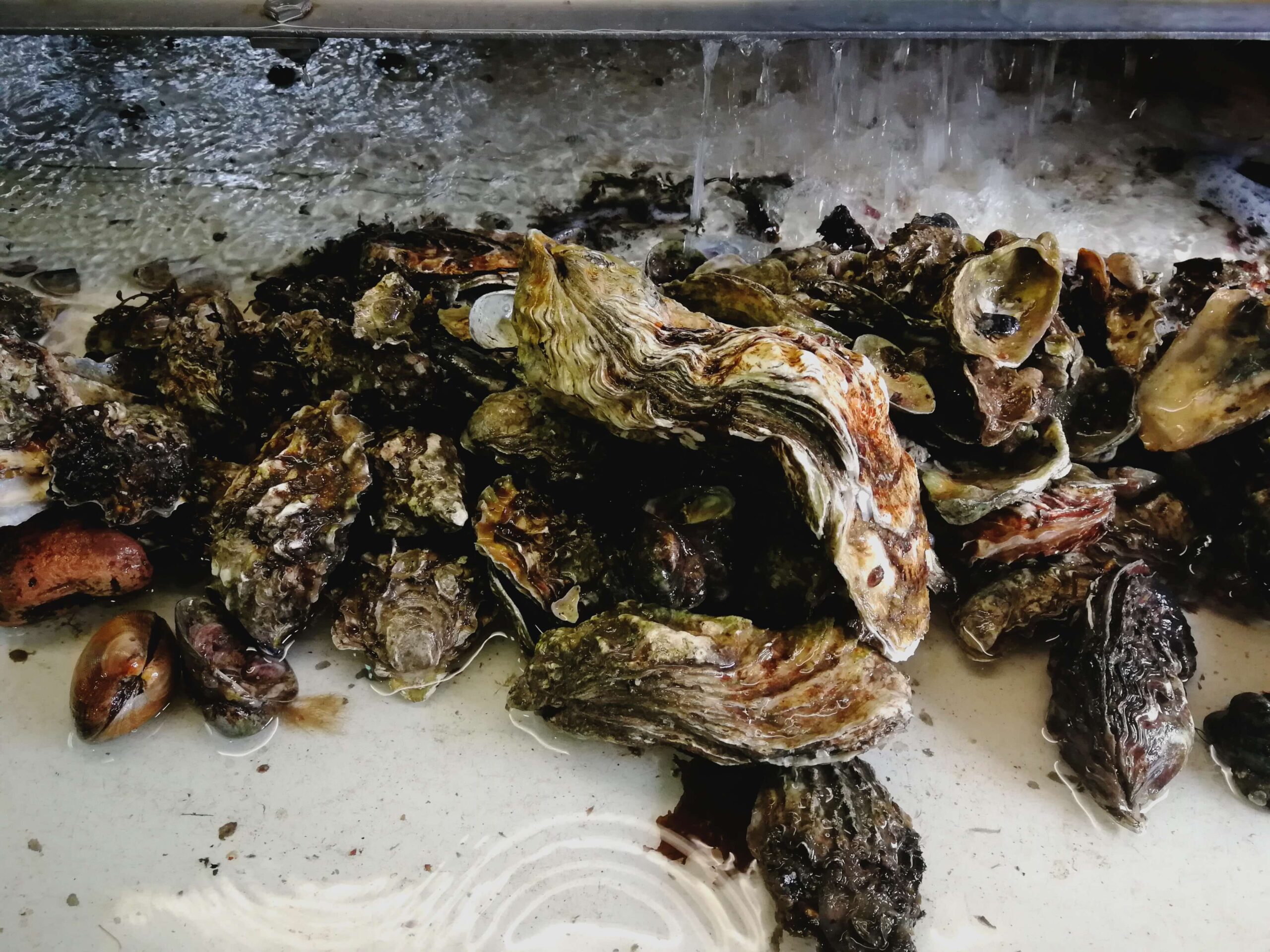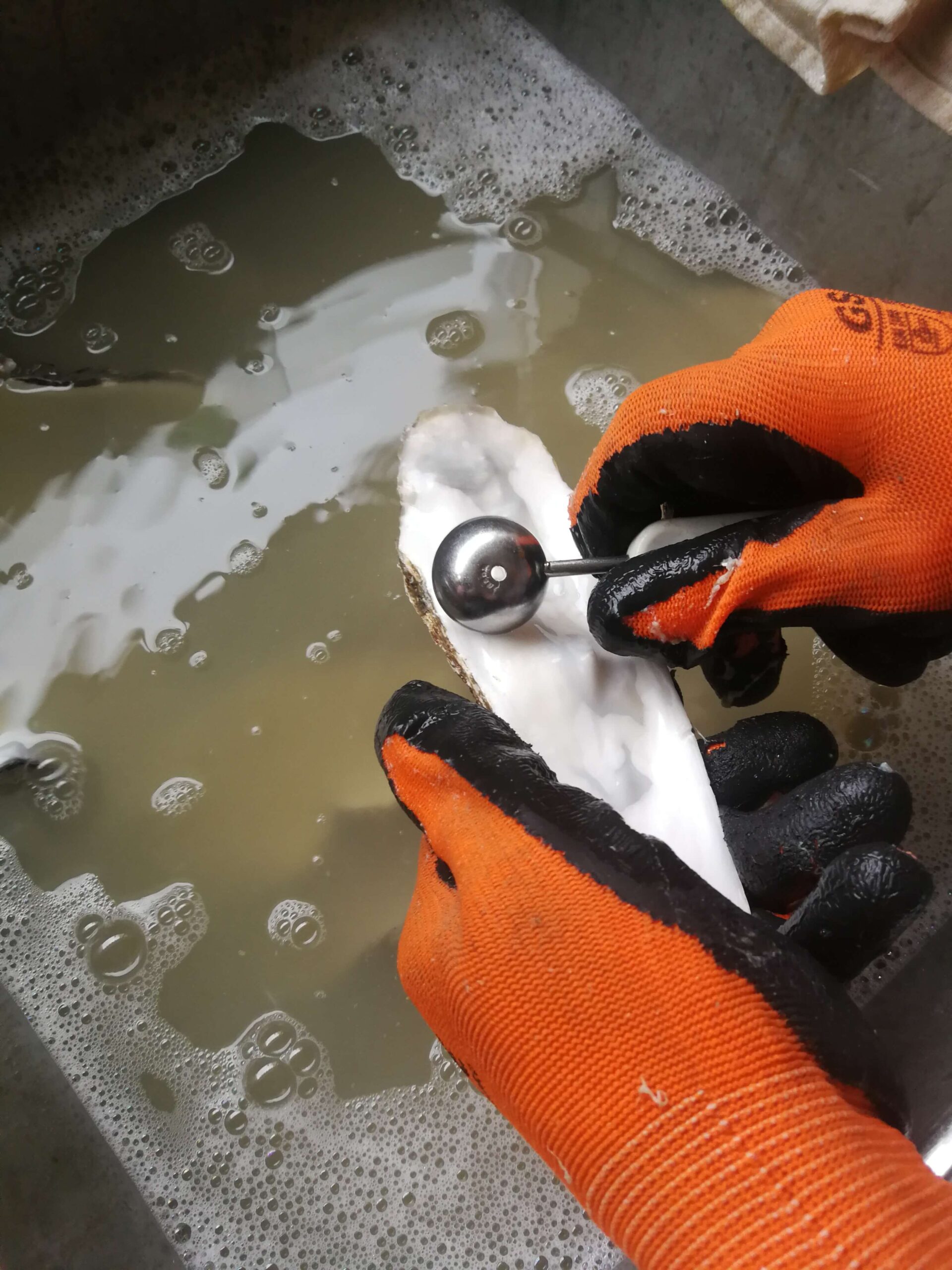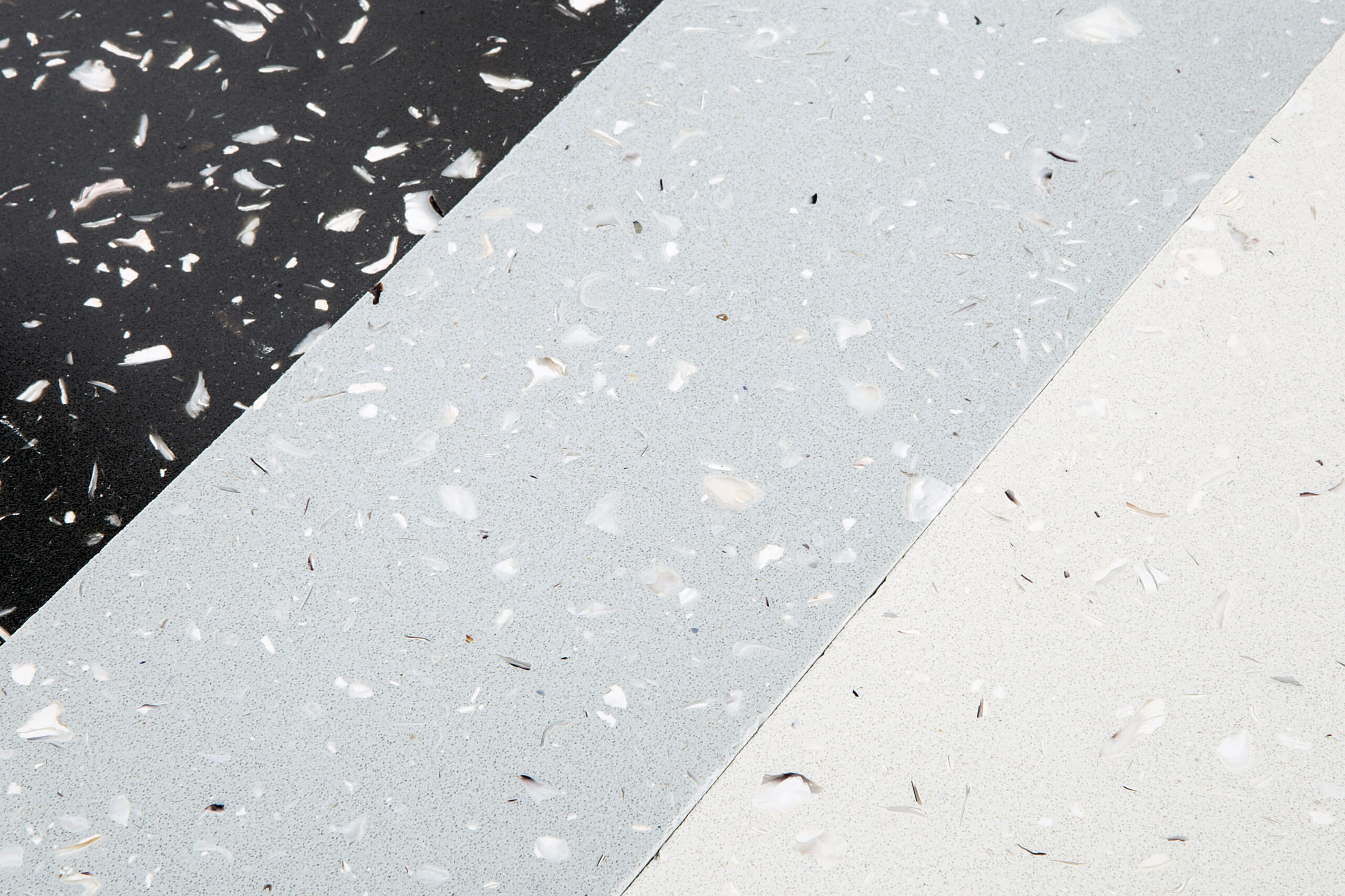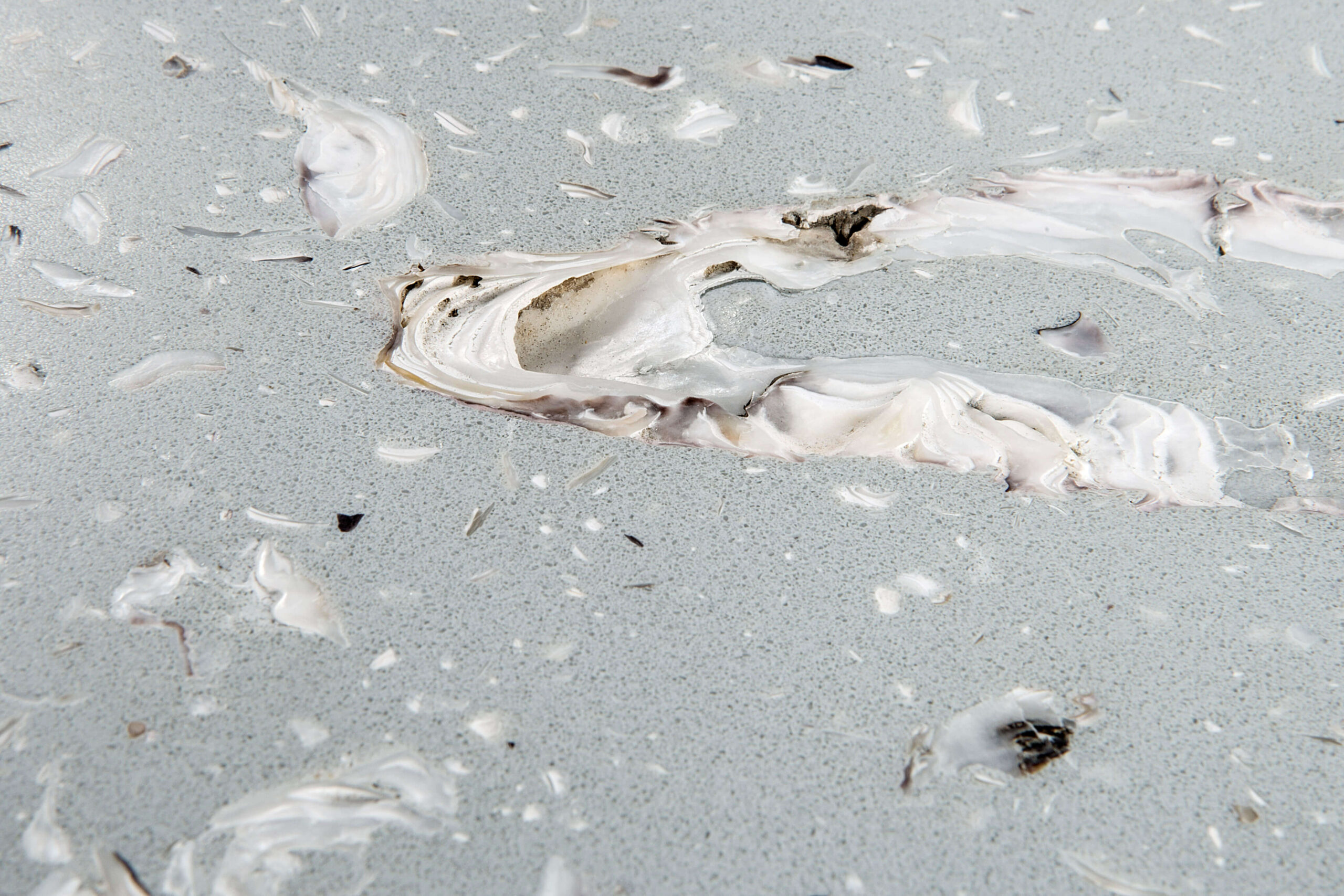It takes five to eight years for an oyster to grow into an edible product. Once it has reached that stage, the oyster is consumed in less than three seconds. Oesterplat gives the oyster shells a new purpose and thus a longer lifespan. Like any other natural marble or stone, basic care and attention will contribute to longevity, maintaining quality and beauty.
The oyster is consumed in less than three seconds. With Oesterplat at home, you can enjoy the shell for a lifetime.
Made of
Oyster plat is an engineered marble made out of :
- 88% quartz
- 5% oysters
- 7% polyester resin
- 1% pigment

Production Process
Oesterplat is produced using Bretonstone® system technology and a special process of “vacuum vibro compression”.
- It takes about five to eight years for an oyster to grow into an edible product.
- The oysters are collected at various restaurants in the Netherlands. It takes six to eight months to collect enough shells for one production.
- After this, the oysters are cleaned and separated. It takes six days to clean an oyster.
- The oysters are then air-dried and grinded. This takes two days.
- The pile of production waste goes to nearby chicken farms.
- Then the shells are mixed with quartz and resin, pressed and cured. This process is done in three days.
- The plates are then ready to be cut for the final design

Applied
Oysterplat is a contemporary fossil for architectural surfaces. Its versatility, resistance, aesthetic performance, hygienic quality and easy maintenance make it the perfect material for residential, commercial and public projects.

Environmental impact
- Oesterplat is a sustainable material made from recycled oyster shells.
- The product is made to last. If a surface becomes dull, it can be re-polished.
- Oesterplat is made with the sustainable marble surface of Amsterdam’s canal houses in mind.
Growth opportunities
Oysters are now cleaned by hand, which makes the process labour-intensive, time-consuming and expensive. Moreover, only prototypes have been created, so a commercial application has yet to be realised.


